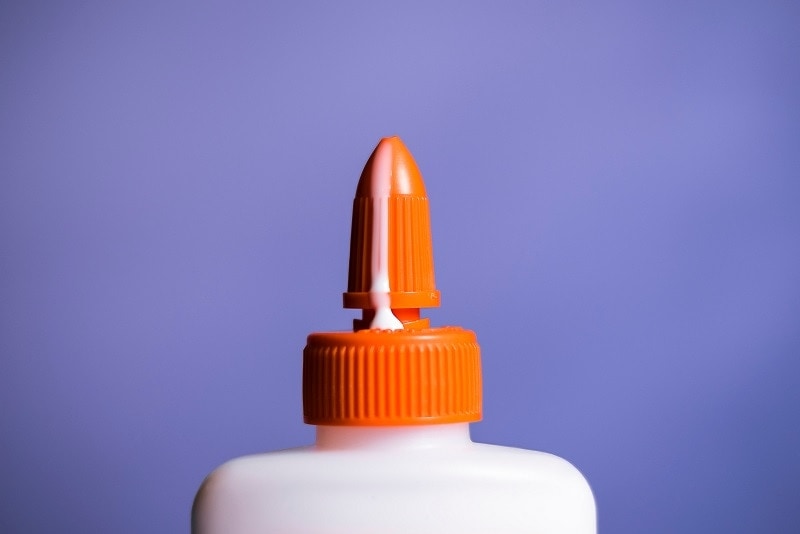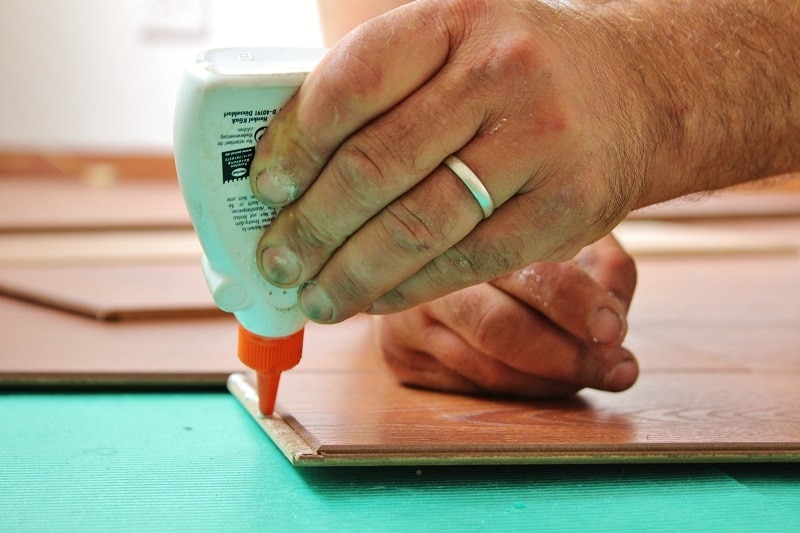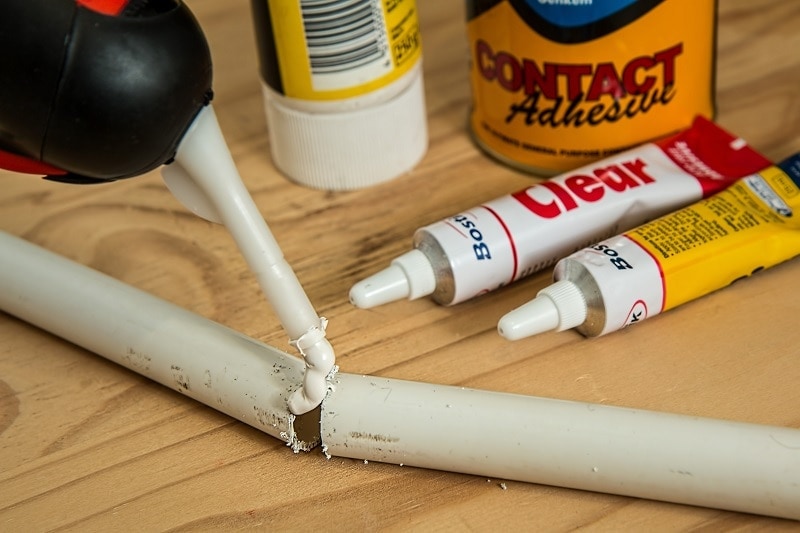What is PVA Glue & When Should it be Used?
-
- Last updated:



What Is PVA Glue?

PVA glue is just glue with a special additive called Polyvinyl Acetate. Polyvinyl Acetate is a clear, odorless, rubbery polymer that helps seal up the pores in whatever material it’s applied to. The polymers are thick, so they can cover up the holes and create a smooth surface for applying finishes like paint or stain.
It’s also great for attaching two porous materials, such as wood, paper, or fabric. The polymers help to increase the adhesion between the two materials, making for a strong and permanent bond.
Is PVA the Same as Elmer’s Glue?
Elmer’s Glue and PVA are similar but contain different chemicals. Some people even use the names interchangeably. However, Elmer’s Glue isn’t a great choice for professional work or anything you plan to sell. PVA glue is permanent and won’t break down or yellow over time.
Elmer’s, on the other hand, will start to degrade after a few years and might come apart. On top of that, Elmer’s Glue tends to yellow as it ages, which can ruin the look of art and crafts made with it.
When to Use PVA Glue
People use PVA glue for a wide range of tasks. It’s great for woodworking, crafts, art, and even for creating a smooth surface to accept finishes.
- Joining two pieces of wood
- Binding for books
- Adhesive for paper
- Envelope adhesive
- Adhesive for installing wallpaper
- Crafts
- Art
- Mixed with water to seal wood for finishing
- Mixed with water to coat drywall for paint
Benefits of PVA Glue

There are many reasons why you might use PVA glue over another type of glue. Some of those reasons include the following:
- It doesn’t turn yellow over time
- PVA glue doesn’t lose adhesion with age
- It’s non-toxic unless ingested
- No harmful fumes or odors
- Dries clear
- Doesn’t change the pH of materials it contacts
- It’s flexible when dry
- It’s water-soluble
- It can be painted over
Drawbacks of PVA Glue
While PVA glue is a great substance and is often a better choice than other types of adhesives, it’s not perfect. There are drawbacks associated with PVA glue, such as:
- It requires 24 hours to cure fully
- You can’t freeze PVA, or it will break up the polymer
- You can’t apply varnish over PVA
- It’s not waterproof
- Fungi, algae, yeasts, and bacteria break down PVA
Types of PVA Glue
PVA comes in many forms, and each variety is best suited for particular uses.
Regular PVA Glue
This form of PVA is often used for crafts, art, bookbinding, sealing boxes, and more. It’s a white glue when wet, though it dries completely clear. Once dry, it’s permanent and remains flexible.
PVA Wood Glue
PVA wood glue is used to join pieces of wood together. Rather than drying clear like standard PVA glue, PVA wood glue has a yellow tint, so it blends in better with the natural color of wood. You can also mix PVA wood glue with water to thin it out, allowing you to use it as a sealer and primer for the wood to more readily accept paint.
PVA Water-Resistant Glue

One of the main drawbacks of PVA glue is that it’s not waterproof since it’s water-soluble. But PVA water-resistant glue fixes this issue. It resists moisture and mildew, but it’s not entirely waterproof. If submerged, it will lose a lot of its hold. However, it can withstand inclement weather and humidity.
PVA Primer
PVA primer is a thinned-down version of PVA glue. You can make your own PVA primer by adding water to your PVA glue. Once it’s in primer form, you can easily use it to coat porous materials so they’ll be ready for painting. Drywall primer is always PVA primer, and it’s perfect for sealing all the tiny holes in drywall that suck up paint, reducing the total number of topcoats you’ll have to apply.

Conclusion
PVA Glue is an excellent material that’s perfect for a wide range of uses. You might use PVA glue for crafts, woodworking, bookbinding, or other tasks. If regular PVA isn’t perfect for your needs, there might be another variation of PVA that is. It’s ideal for joining wood together and creating a finish that will accept paint. It can even be used as a primer to seal fresh drywall before painting. However you plan to use PVA glue, hopefully, you’re now equipped with all the knowledge you need.
- Related Read: PVA Primer vs Drywall Primer: What’s the Difference?
Featured Image Credit: Scott Sanker, Unsplash
Contents

